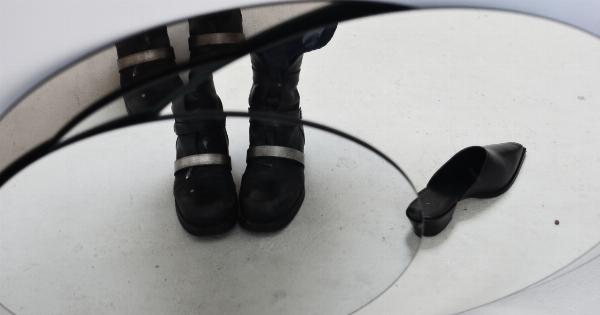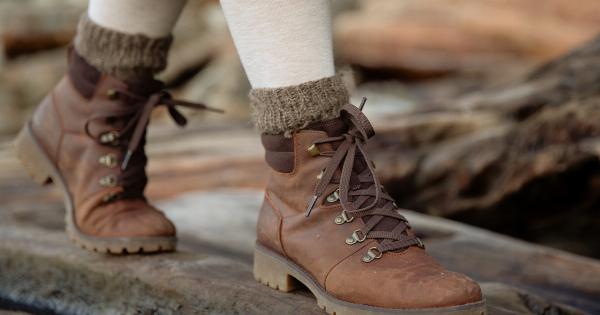Our lower extremities, including our feet, ankles, and legs, play a crucial role in our mobility and overall well-being.
Whether you have a physically demanding job or spend most of your time sitting at a desk, it’s important to protect and care for your lower extremities to prevent job-related wear and tear. In this article, we will discuss some effective strategies to secure your lower extremities and promote long-term health.
The Importance of Lower Extremity Health
Before we delve into protective measures, let’s understand why it’s vital to safeguard our lower extremities. Our feet and legs bear the weight of our bodies and are exposed to various stresses and strains throughout the day.
When we engage in work activities that involve prolonged standing, repetitive motions, heavy lifting, or constant walking, our lower extremities are at a higher risk of developing injuries and experiencing wear and tear.
Ignoring the health of our lower extremities can lead to a multitude of issues such as foot pain, plantar fasciitis, shin splints, ankle sprains, and even long-term deformities.
By taking preventive measures and incorporating healthy habits into our daily routines, we can significantly reduce the chances of job-related injuries and improve the quality of our lives.
Protective Measures for Lower Extremities
1. Choose the Right Footwear
When it comes to protecting your lower extremities, investing in good-quality footwear is of utmost importance.
Different jobs require different types of shoes or boots, so it’s essential to select footwear that provides adequate support, cushioning, and stability. If your work involves heavy lifting or standing for long periods, opt for shoes with shock-absorbing soles and arch support. Those who work in hazardous environments should wear steel-toed boots for added protection against potential injuries.
2. Utilize Orthotic Inserts
Orthotic inserts are specially designed insoles that can significantly improve foot and ankle stability, reduce stress on the lower extremities, and alleviate pain.
Inserting these orthotics into your footwear can help distribute pressure evenly and correct any structural abnormalities in your feet. If you’re unsure about the right type of orthotics for your needs, consult with a podiatrist or foot specialist.
3. Practice Proper Ergonomics
Whether you’re sitting at a desk or performing physical tasks, maintaining proper ergonomics is crucial for safeguarding your lower extremities.
If your job involves prolonged sitting, ensure that your chair is properly adjusted to provide optimum support for your lower back and legs. Take regular breaks to stretch your legs and avoid crossing them for extended periods to prevent circulation issues.
If you perform physically demanding tasks, ensure you lift heavy objects correctly using your legs rather than your back to avoid straining your lower extremities.
4. Perform Regular Stretching Exercises
Stretching exercises help to improve flexibility, increase blood circulation, and prevent muscle imbalances and tightness. Incorporate lower extremity stretches into your daily routine to enhance the health and mobility of your legs, ankles, and feet.
Focus on stretches that target specific groups of muscles, such as calf stretches, ankle rolls, and toe lifts. Regular stretching can reduce the risk of injuries and alleviate pain associated with job-related wear and tear.
5. Strengthen Lower Extremity Muscles
Strengthening the muscles in your lower extremities can provide added support and stability to the area, reducing the risk of strain or injury. Incorporate exercises that target your calves, quadriceps, hamstrings, and glutes into your workout routine.
Perform exercises such as calf raises, squats, lunges, and leg presses to build strength in your lower extremity muscles. Strong muscles can better withstand the demands of your job and minimize the wear and tear on your lower extremities.
6. Maintain a Healthy Body Weight
Excess body weight places additional stress on your lower extremities, increasing the risk of various conditions such as plantar fasciitis, shin splints, and knee pain.
By maintaining a healthy body weight through regular exercise and a balanced diet, you can significantly reduce the strain on your lower extremities and promote their overall health. Shedding extra pounds also decreases the likelihood of developing chronic conditions such as osteoarthritis.
7. Stay Hydrated
Proper hydration is crucial for maintaining healthy joints, as it helps lubricate the cartilage and allows for smooth movement.
Drinking an adequate amount of water throughout the day can prevent joint stiffness, reduce the risk of tendonitis, and promote the overall health of your lower extremities. Make it a habit to carry a water bottle with you and stay hydrated, especially if your job requires physical activity or involves working in hot environments.
8. Take Regular Breaks
Whether you’re on your feet all day or sitting for prolonged periods, taking regular breaks is essential for reducing the strain on your lower extremities.
If you have a sedentary job, make sure to stand up, stretch, and walk around every hour to improve blood circulation and prevent stiffness. Conversely, if your job requires constant standing or physical exertion, take short breaks to rest and elevate your legs to reduce swelling and promote proper circulation.
9. Use Assistive Devices
Depending on your job requirements, consider using assistive devices to further secure your lower extremities. If you work in a field that involves heavy lifting, use lifting belts to provide additional support for your back and legs.
For individuals who work in occupations that require prolonged standing, anti-fatigue mats can help reduce the strain on your feet and minimize the risk of foot pain and discomfort.
10. Seek Medical Attention
If you experience persistent pain, swelling, or any other discomfort in your lower extremities, it’s crucial to seek medical attention.
Ignoring the symptoms and continuing to work through the pain can exacerbate the condition and lead to long-term damage. A healthcare professional specializing in foot and ankle health can diagnose the issue, provide appropriate treatment, and offer valuable advice on preventing further wear and tear.
Conclusion
Protecting and securing our lower extremities is essential to prevent job-related wear and tear and maintain overall well-being.
By following the aforementioned strategies – choosing appropriate footwear, utilizing orthotic inserts, practicing proper ergonomics, performing regular stretching exercises, strengthening lower extremity muscles, maintaining a healthy body weight, staying hydrated, taking regular breaks, using assistive devices when necessary, and seeking medical attention for any issues – you can significantly reduce the risk of job-related injuries and ensure optimal health for your lower extremities.



























